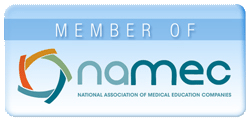Falling Asleep on the Job: A Chart Review on Managing Shift Work Disorder
neuroscienceCME Chart Review
Premiere Date: Thursday, August 2, 2012This activity offers CE credit for:
- Physicians (CME)
- Nurses (CNE)
- Pharmacists (ACPE)
- Other
All other clinicians will receive a Certificate of Attendance stating this activity was certified for AMA PRA Category 1 Credit™
Credit Expiration Date:
Friday, October 11, 2013
Note: Credit Is No Longer Available
 | Thomas Roth, PhD Chief, Division Head Sleep Disorders and Research Center Henry Ford Hospital Detroit, MI |
 | Phyllis C. Zee, MD, PhD Director, Center for Circadian and Sleep Medicine Chief of Sleep Medicine in the Department of Neurology Benjamin and Virginia T. Boshes Professor of Neurology Professor of Neurology (Sleep Medicine) Northwestern University Feinberg School of Medicine Chicago, IL |
Shift work describes a broad array of non-standard work schedules including permanent night shift work, rotating shifts, occasional on-call overnight duty and even schedules that demand an early awakening from nocturnal sleep. Based on this definition, roughly one in five workers in the United States does some form of shift work—work that puts them at risk for developing shift work disorder (SWD). In patients with SWD, sleep is attempted at a time that is not in alignment with their internal circadian propensity for sleep and their intolerance for this misalignment results in sleep deprivation and excessive sleepiness during waking hours when alertness is needed. Though effective clinical strategies exist for management of SWD, under-recognition, under-treatment, and poor patient awareness of the disorder hampers opportunities for optimal patient health outcomes.
This neuroscienceCME Chart Review features nationally recognized clinical experts who will use patient case details to help clinicians to effectively identify and treat SWD in accordance with American Academy of Sleep Medicine guidelines.
To educate primary care clinicians on how to recognize, diagnose, and manage shift work disorder in accordance with recommendations from the American Academy of Sleep Medicine.
At the end of this CE activity, participants should be able to:
- Increase the level of clinical suspicion for the diagnosis of shift work disorder in patients who are shift workers.
- Identify components of an effective diagnostic strategy for shift work disorder, in accordance with American Academy of Sleep Medicine guidelines.
- Place a priority emphasis on the benefits that accompany improvements in personal health and public safety that result from effective treatment of patients with shift work disorder.
- Implement treatment plans for patients with diagnoses of shift work disorder, in accordance with American Academy of Sleep Medicine guidelines.
- Speak with patients about how strategies recommended for shift work disorder (SWD) help the circadian rhythm misalignment that underlies SWD.
The following learning objectives pertain only to those requesting CNE or CPE credit:
- Describe the components of an effective diagnostic strategy for shift work disorder, in accordance with American Academy of Sleep Medicine guidelines.
- Explain the benefits of effectively treating shift work disorder.
- List important counseling messages that will help patients with SWD understand how treatment can be used address the circadian rhythm misalignment that underlies SWD.
Supported by an educational grant from Teva Pharmaceuticals.
Primary Audience: Primary care physicians
Secondary Audience: Physician assistants, nurses, nurse practitioners, and pharmacists
CME Credit (Physicians):
CME Outfitters, LLC, is accredited by the Accreditation Council for Continuing Medical Education to provide continuing medical education for physicians.
CME Outfitters, LLC, designates this enduring material for a maximum of 1.0 AMA PRA Category 1 Credit™. Physicians should claim only the credit commensurate with the extent of their participation in the activity.
CNE Credit (Nurses):
Provider approved by the California Board of Registered Nursing, Provider Number CEP 15510, for 1.0 contact hour.
CPE Credit (Pharmacists):
![]() CME Outfitters, LLC, is accredited by the Accreditation Council for Pharmacy Education as a provider of continuing pharmacy education. 1.0 contact hour (0.1 CEU)
CME Outfitters, LLC, is accredited by the Accreditation Council for Pharmacy Education as a provider of continuing pharmacy education. 1.0 contact hour (0.1 CEU)
Universal Activity Number: 0376-0000-12-013-L01-P (live programs)
0376-0000-12-013-H01-P (recorded programs)
Activity Type: knowledge-based
Post-tests, credit request forms, and activity evaluations must be completed online at www.neuroscienceCME.com/TST698 (requires free account activation), and participants can print their certificate or statement of credit immediately (80% pass rate required). This website supports all browsers except Internet Explorer for Mac. For complete technical requirements and privacy policy, visit www.neurosciencecme.com/technical.asp.
Disclosure Declaration
It is the policy of CME Outfitters, LLC, to ensure independence, balance, objectivity, and scientific rigor and integrity in all of their CME/CE activities. Faculty must disclose to the participants any relationships with commercial companies whose products or devices may be mentioned in faculty presentations, or with the commercial supporter of this CME/CE activity. CME Outfitters, LLC, has evaluated, identified, and attempted to resolve any potential conflicts of interest through a rigorous content validation procedure, use of evidence-based data/research, and a multidisciplinary peer review process. The following information is for participant information only. It is not assumed that these relationships will have a negative impact on the presentations.
Dr. Roth has disclosed that he receives grants/research support from Apnex Medical, Inc. and Merck & Co. He serves as a consultant to Abbott Laboratories; AstraZeneca Pharmaceutical, Inc.; Intec Pharma Ltd.; Jazz Pharmaceuticals plc; Merck & Co., Inc.; Neurocrine Biosciences, Inc.; Proctor and Gamble; Pfizer Inc; Purdue Pharma L.P.; Sepracor Inc.; Shire Pharmaceuticals Inc.; Somaxon Pharmaceuticals, Inc.; Somnus Therapeutics Inc; Steady Sleep Rx Co.; and Transcept Pharmaceuticals, Inc. He serves on the speakers bureau of Sepracor Inc. and Somaxon Pharmaceuticals, Inc.
Dr. Zee has disclosed that she receives grant/research support from Respironics Inc. She serves as a consultant to Jazz Pharmaceuticals plc; Merck & Co., Inc.; Purdue Pharma L.P.; sanofi-aventis U.S. LLC; UCB, Inc.; and Vanda Pharmaceuticals.
Tony Graham, MD (content/peer review) has no disclosures to report.
Ruth Cody, BSN, RN-BC (content/peer reviewer) has no disclosures to report.
Nancy Jennings, MSN, MBA, MHA, RNC (content/peer reviewer) has no disclosures to report.
Monique Johnson, MD CCMEP (planning committee) has no disclosures to report.
Joy B. Leffler, MLA, NASW, CSE (planning committee) has no disclosures to report.
Sharon Tordoff, CCMEP (planning committee) has no disclosures to report.
Unlabeled Use Disclosure
Faculty of this CE activity may include discussions of products or devices that are not currently labeled for use by the FDA. The faculty have been informed of their responsibility to disclose to the audience if they will be discussing off-label or investigational uses (any uses not approved by the FDA) of products or devices.
CME Outfitters, LLC, the faculty, and Teva do not endorse the use of any product outside of the FDA labeled indications. Medical professionals should not utilize the procedures, products, or diagnosis techniques discussed during this activity without evaluation of their patient for contraindications or dangers of use.
Questions about this activity? Call us at 877.CME.PROS (877.263.7767).
CR-011-080212-15




